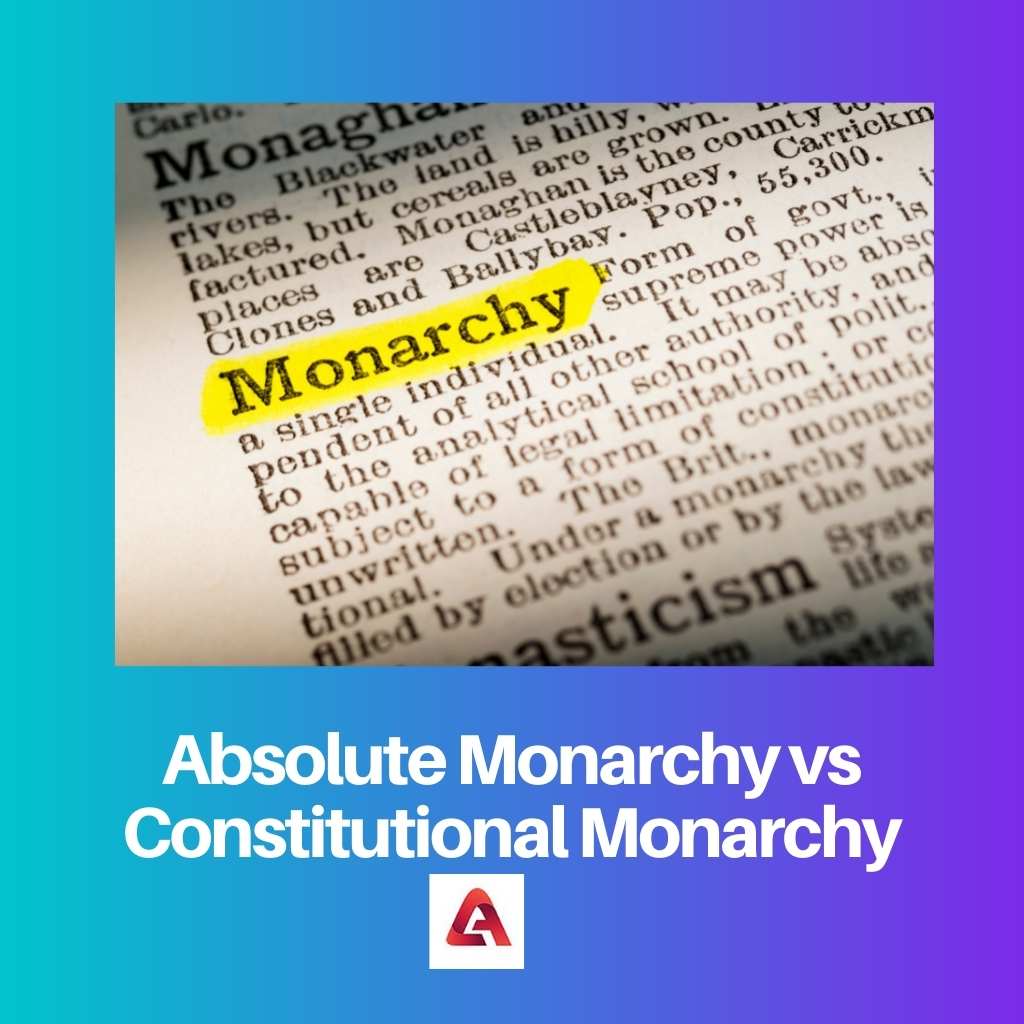A Monarchy is a rule in which the Monarch is referred to as the head of a state or country.
There are two main types of monarchies, Absolute Monarchy and Constitutional Monarchy.
Key Takeaways
- In an absolute monarchy, the monarch holds unrestricted power and authority. In contrast, in a constitutional monarchy, the monarch’s power is limited and regulated by a constitution or a set of laws.
- Absolute monarchies were more common historically, but constitutional monarchies have become the dominant form of monarchy in contemporary times.
- Both forms of monarchy center around a hereditary ruler, but constitutional monarchies emphasize the importance of checks and balances to prevent abuse of power.
Absolute Monarchy vs Constitutional Monarchy
Absolute monarchy is a system of government where a single monarch has complete control over all aspects of governance, including legislation, judiciary, and executive functions. Constitutional monarchy is a system of government where the Monarch serves as a figurehead with limited powers.

In an Absolute Monarchy, the Monarch is the one person who has all powers. He may abided by the country’s constitution or be on his terms.
Nobody has more power than he does and is the sole decision-maker. Usually, the emphasis is followed through the next generations, also called hereditary.
In a Constitutional Monarchy, the Monarch has only limited powers. All the people, including the Monarch and parliament, should abide by constitutional rules.
The Monarch, along with the parliament, takes the decisions. Usually, parliamentarians are elected by the people.
Neither the Monarch nor parliament alone can have full powers over the people.
Comparison Table
| Parameters of Comparison | Absolute Monarchy | Constitutional Monarchy |
|---|---|---|
| Crime Rate | Usually higher than absolute monarchy because the punishments were given according to laws in the constitution. | The monarch will have the highest power ever |
| Also Known as | Absolutism | Democratic monarchy |
| Highest Authority | Monarch | Monarch and parliament |
| Decision Maker | Monarch | Monarch and parliament |
| Amount of Power | It may follow or may not | Monarch powers were limited by parliament and the constitution |
| Constitution Following | The authority passes down the generations, calling them the royal family | Everyone should abide by the constitution |
| How Authority is Given | The people elected them. | They were elected by the people. |
What is Absolute Monarchy?
An Absolute Monarchy mainly refers to a ruling by the Monarch, either by the king or queen. They have all power over the rules.
This type of rule is also known as Absolutism. They may abide by constitutional rules or create their own rules.
They think of or refer to them as people sent by God and act like gods. No one can question or judge them, or the king will severely punish them.
The king has all the power to decide many things, like taxes, administration, foreign policy, public welfare, etc.
They make rules and can also destroy them.
The Monarchs and their families were called Royals, and the monarchy was passed down over the generations.
The crime rate was found to be low as there were severe punishments during those times. They used to make decisions even if they were not good.
Those who crossed the rules or revolted against the king were remarked upon as sinners or people who stood against the will of God. The Absolute Monarchy is still practised in some countries, like Saudi Arabia, the UAE, Vatican City, Brunei, etc.
What is a Constitutional Monarchy?
“A Constitutional Monarchy refers to a rule by a monarch and parliament. This ruling is also known as the”Democratic ruling.”A Constitutional Monarchy refers to a rule by a monarch along with parliament. This ruling is also known as the “Democratic ruling.”
Here, the Monarch is referred to as the prime minister, the highest of all. He has limited powers and can’t make decisions solely without Parliament’s approval.
Everyone, including the Monarch and parliament, should abide by the Constitution. The people elect the parliament and Monarch.
But the Monarch has the power to dissolve parliament according to rules in the Constitution if people grow restless about it.
Neither the Monarch nor parliament has any rights to punish beyond the Constitution.
The modern Constitutional Monarchy was first developed in the United Kingdom and had two types: Executive and Ceremonial.
In Executive Monarchism, the Monarch can influence or impact this system of government.
Whereas in Ceremonial Monarchism, the Monarch has little or no impact on the system of government.
The three main and important factors distinguish the monarchies from one another. They are Royal Prerogative, Sovereign Immunity, and Allegiance.
Constitutional Monarchies are Japan, Thailand, Malaysia, Afghanistan, Belgium, etc.
Main Differences Between Absolute Monarchy and Constitutional Monarchy
- In an Absolute monarchy, the sole power belongs to the Monarch, who is either king or queen, whereas, in a Constitutional Monarchy, the power belongs to the monarchy and parliament, which consists of a group of people elected by the government.
- In an Absolute Monarchy, the constitution may or may not be followed as the Monarch makes his own rules. In a Constitutional Monarchy, the rules should be strictly followed according to the constitution.
- In an Absolute Monarchy, power is passed down through the generations, whereas in a Constitutional Monarchy, the rulers are elected by the people.
- The Monarchs of an Absolute Monarchy consider themselves divine people, or people sent by God to rule over people, whereas, in a Constitutional Monarchy, the monarch and parliament people are considered public servants.
- The main difference lies in the power the Monarch holds. The Absolute Monarch can stop everything in the place he rules and make any decision he wants. Whereas in a Constitutional Monarchy, the Monarch is given very limited powers.
- https://heinonline.org/hol-cgi-bin/get_pdf.cgi?handle=hein.journals/mslr2012§ion=58
- https://irhj.sbu.ac.ir/index.php/Lignocellulosic/article_95738.html?lang=en
